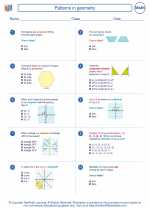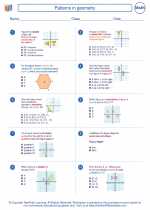Ratio Study Guide
What is a Ratio?
A ratio is a comparison of two quantities. It is often written as a fraction or using the colon symbol (:). For example, the ratio of apples to oranges can be written as 2:3 or 2/3.
Understanding Ratios
Ratios can be used to compare different quantities and can be simplified just like fractions. For example, the ratio 6:9 can be simplified to 2:3 by dividing both numbers by their greatest common divisor which is 3.
Using Ratios in Problem Solving
Ratios are commonly used in problem-solving situations, such as mixing ingredients in a recipe, determining distances on a map, and comparing quantities in financial or business contexts.
Types of Ratios
There are different types of ratios, including:
- Simple Ratio: A comparison of two quantities using the colon symbol (:).
- Rates: Ratios that compare quantities with different units, such as miles per hour or cost per item.
- Proportions: Equations that show that two ratios are equal.
Proportions and Cross-Multiplication
When solving proportions, cross-multiplication is a useful method to find the missing value. Cross-multiplication involves multiplying the numerator of one ratio by the denominator of the other ratio, and vice versa.
Practice Problems
Here are some practice problems to test your understanding of ratios:
- If the ratio of boys to girls in a class is 3:5 and there are 24 students in the class, how many boys are there?
- A recipe calls for a ratio of 2 cups of flour to 3 cups of sugar. If you want to use 6 cups of sugar, how much flour should you use?
- If a car travels 180 miles in 3 hours, what is its average speed in miles per hour?
Summary
Ratios are a fundamental concept in mathematics that are used to compare and relate quantities. Understanding ratios and how to work with them is important for solving various real-world problems.
[Ratio] Related Worksheets and Study Guides:
.◂Math Worksheets and Study Guides Eighth Grade. Patterns in geometry

 Worksheet/Answer key
Worksheet/Answer key
 Worksheet/Answer key
Worksheet/Answer key
 Worksheet/Answer key
Worksheet/Answer key
